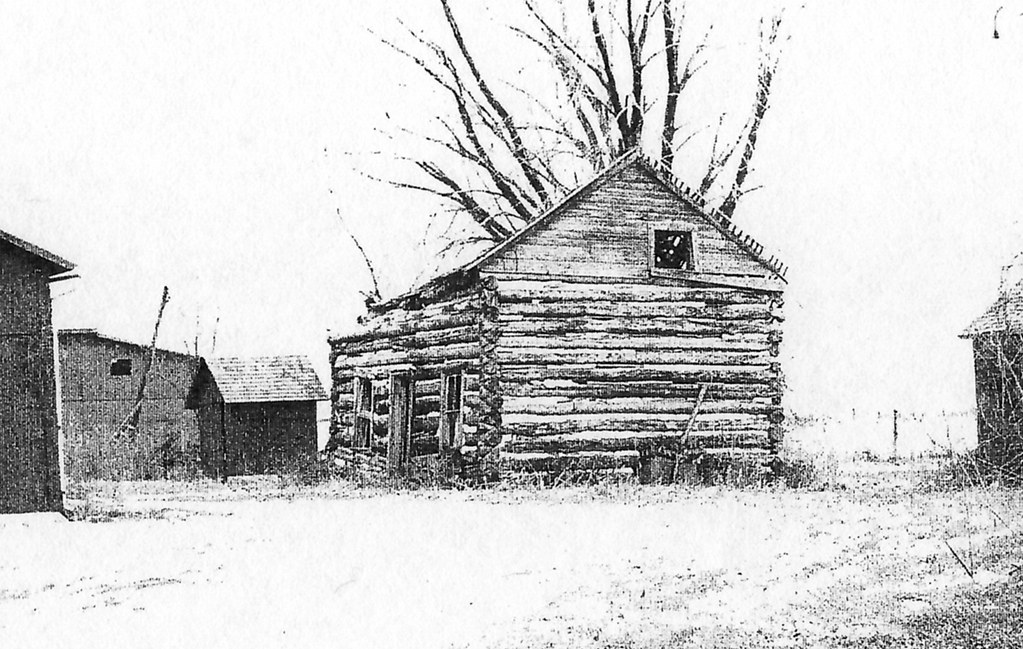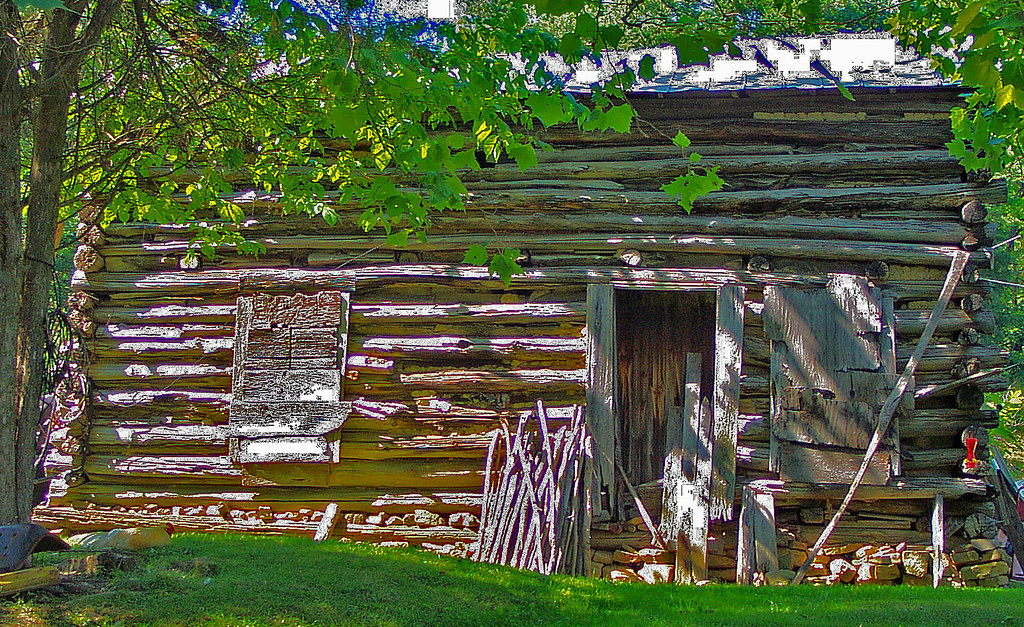Perhaps the largest conflation in the study of early architecture is that between log
cabins and log
houses. Though interchangeable in modern usage, these terms describe slightly different structures; the cabin is an exceptionally crude residence bereft of architectural ornamentation, constructed of round logs (in the 18th and early 19th centuries, “blockhouse” often referred to a hewed log building, while “cabin” implied crudeness, ephemerality, and round log construction) and intended for temporary use. Accordingly, cabins existed during a locality’s settlement, but were usually replaced by better-finished log homes (or frame, brick, or stone structures) when a settler was financially able. Early residents in every portion of Ohio constructed cabins, but only regions with well-built log
houses contain extant structures, as cabins have disappeared from the landscape.
Nevertheless, a few cabin-like buildings survived into the 20th century. Ohio's southeastern quadrant, especially, contains several round log structures, though none are true cabins.
 |
| Log house, Stokes Township, Logan County, Ohio. Photo by Susannah Lane (?), 1969, from the "Southwest Ohio Survey." According to the survey report, four historic round log dwellings stood in Ohio in 1970; the source of this number remains unknown. |
 |
| Crude log house, Pike County, Ohio. Photo by Don O'Brien, 2005. Shoddily constructed, this structure may date from the 20th century; such houses are scattered throughout southeastern Ohio, where traditional building practices persisted long after falling out of favor elsewhere. |



No comments:
Post a Comment